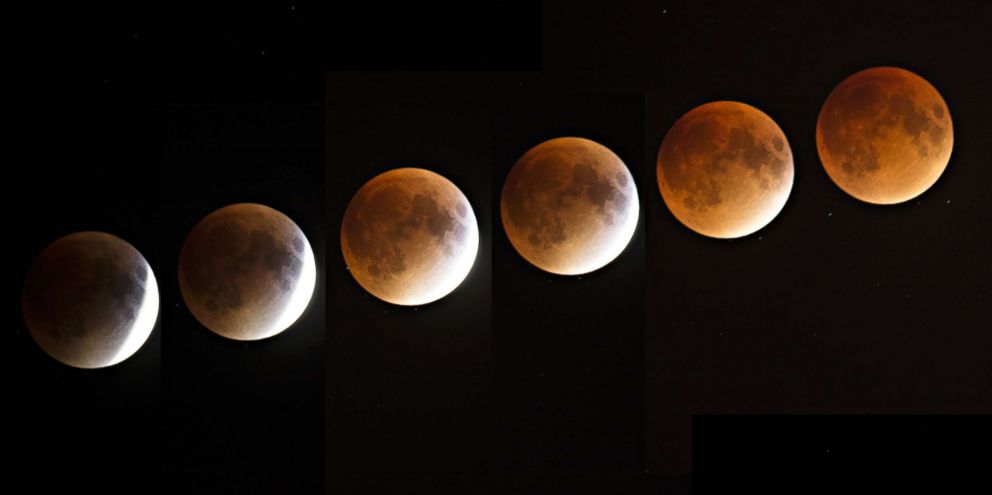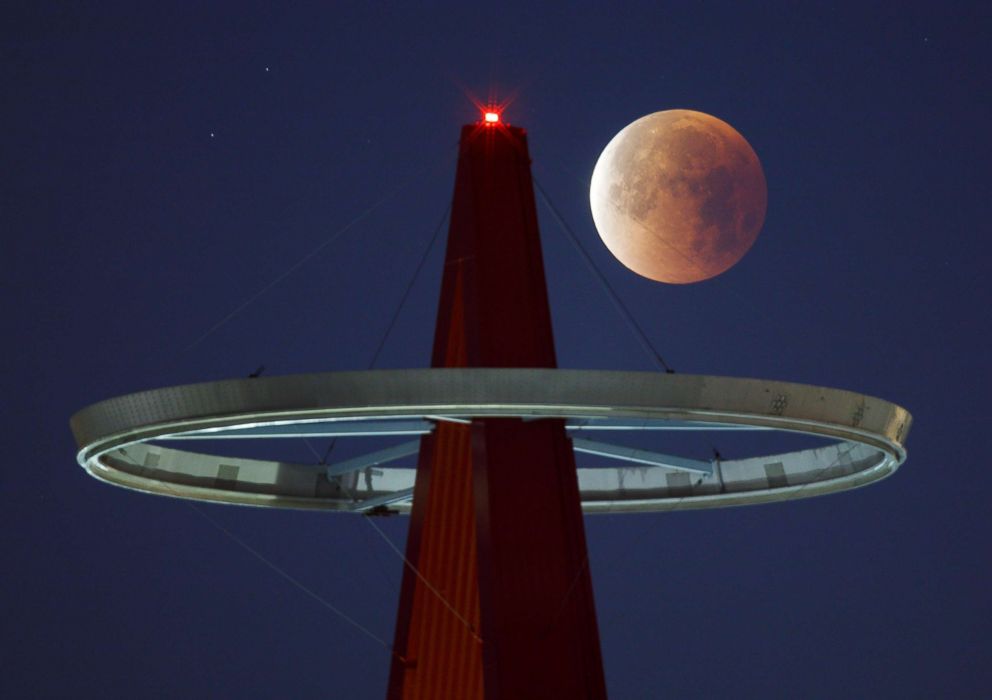'Super blood wolf moon' to welcome in 2019 with rare celestial spectacle
'Super blood wolf moons' will only appear 28 times this century.
A super blood wolf moon is going to appear in all its stunning splendor Sunday night, as a rare cosmic gesture to welcome in 2019.
People who live in the Americas, Europe, Africa and the central Pacific region could take a glimpse of this stunning image late Sunday and into early Monday, according to National Aeronautics and Space Administration (NASA).
The eastern side of North America will have the best view, but the full lunar eclipse will be visible from coast to coast, and will last far longer than most eclipses, with a duration of roughly one hour and three minutes. Super blood wolf moons are highly uncommon: only 28 are expected to align this century.
Here's everything you need to know about the celestial excitement ahead:
What is a ‘wolf moon’?
“Traditionally, a wolf moon is the first full moon in January,” said Tracy Gregg, a planetary scientist at the University at Buffalo.
Why is it called a ‘wolf moon’?
“No one knows for sure why it's called that," Gregg said. "But I'm sure you can imagine cold, dark European winters a thousand years ago, with the wolves howling in the distance."

No one knows for sure why it's called that. But I'm sure you can imagine cold, dark European winters a thousand years ago, with the wolves howling in the distance.
What is a ‘super moon’?
“A super moon is when there is a full moon at the same time that the moon is closest to Earth,” Gregg said. “The distance between the Earth and Moon changes slightly every day as the Moon orbits the Earth [and] the full moon occurs when the moon and Earth are closest to each other, [when] the Moon really does look bigger than usual.”
What is a ‘blood moon’?
“A blood moon is part of a lunar eclipse. As the Earth's shadow comes between the Sun and the full moon, the moon's color changes to a reddish tint,” Gregg explained.

Earth's atmosphere scatters blue light (that's why the sky looks blue), but the red light gets reflected onto the Moon's surface -- so that's what we see during a lunar eclipse.
Why does the moon look red?
“We're used to seeing a full moon when the bright moonlight is pure sunlight reflected from the moon's surface," Gregg said.
"During a lunar eclipse, the only light the moon gets is reflected off of Earth and Earth's atmosphere. Earth's atmosphere scatters blue light (that's why the sky looks blue), but the red light gets reflected onto the Moon's surface -- so that's what we see during a lunar eclipse.”
What is a ‘super blood wolf moon’?
“So a super blood wolf moon" is: a) the first full moon in January; b) a full moon occurring when the distance between the Earth and Moon is as short as possible; c) a lunar eclipse--all happening at once!” Gregg said, adding that it is a rare phenomenon.
When could I see it?
The total lunar eclipse will begin at 11:41 p.m. EST and last until 12:44 a.m. on Monday, according to Space.com, which pinpoints the peak viewing at 12:16 a.m. EST.






